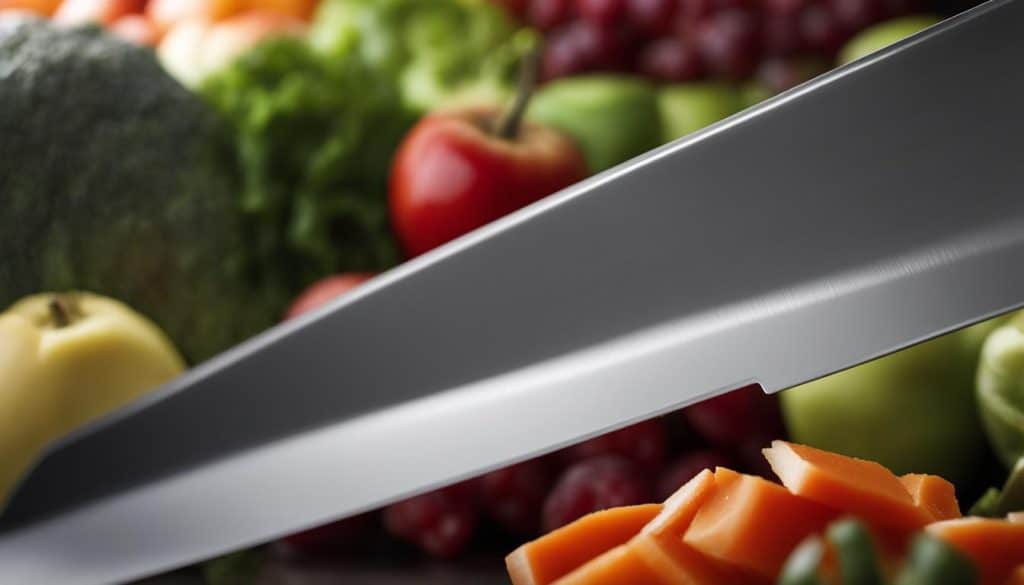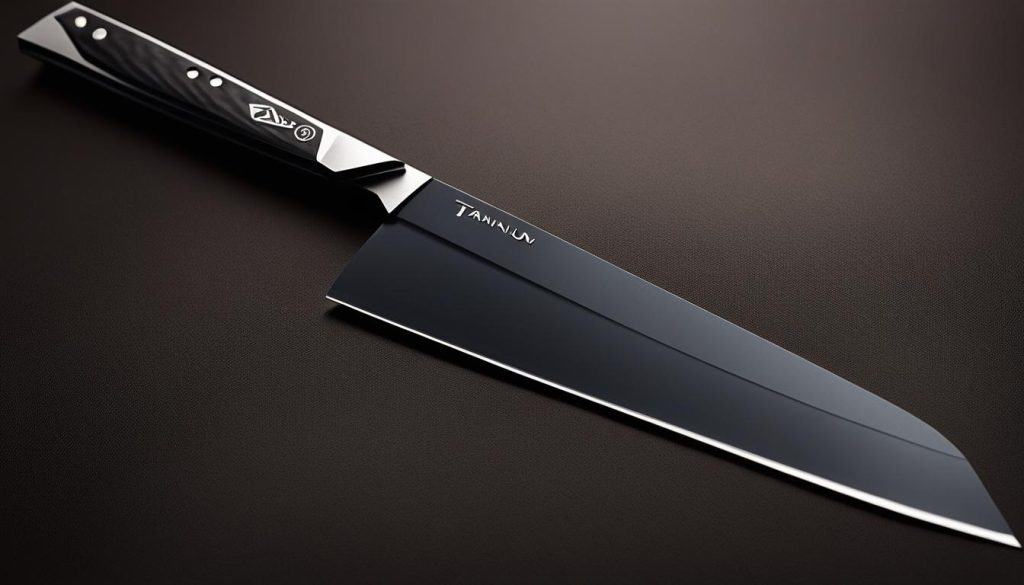If you’re looking to buy a new blender, one factor to consider is the blade material. The blender blade material can impact the durability, sharpness, and taste transfer of your blender.
In this article, we’ll explore the pros and cons of the t ee most popular blade materials: stainless steel, titanium, and ceramic. We’ll also provide tips to help you choose the right blade material for your blending needs.
Durability of Blender Blade Material
The durability of blender blade material is a crucial aspect to consider when choosing the right blender. Stainless steel blades are the most common and affordable option, known for their durability.
They are resistant to scratches and wear and tear. However, they may rust and dull over time, affecting their blending performance.
Titanium blades are known for their exceptional durability and rust-resistance, making them a great investment in the long run. Although generally more expensive than stainless steel blades, they typically last longer and require less frequent replacement.
Ceramic blades are the most durable option, rust-proof, and self-sharpening, making them a low-maintenance and long-lasting option. However, they can be brittle and susceptible to chipping, which can negatively impact their durability over time.
Sharpness of Blender Blade Material
The sharpness of blender blade material plays an important role in achieving the desired blending results. Each blade material, stainless steel, titanium, and ceramic, has its unique properties that should be considered before making a decision.
| Blade Material | Sharpness |
|---|---|
| Stainless Steel | Good initial sharpness, tends to dull faster compared to titanium or ceramic blades. |
| Titanium | Stays sharp longer than stainless steel, but not as sharp as ceramic blades. |
| Ceramic | Maintains exceptional sharpness over time, but can chip, leading to uneven blending. |
If you prioritize sharpness over other factors, ceramic blades are the top choice. However, if you’re on a budget, stainless steel blades are an excellent starting point. Meanwhile, titanium offers a balance between sharpness and durability.
Remember to consider your specific blending needs and preferences when making your final decision.

Taste Transfer of Blender Blade Material
When choosing the best blender blade material for your needs, taste transfer is an important consideration. Different materials can affect the overall taste of your blends.
Stainless steel blades are a popular and affordable option. However, they can absorb strong flavors such as garlic or turmeric, which can result in unwanted flavor transfer to other blends. Thorough cleaning after use is essential to avoid this issue.
Titanium blades, on the other hand, have a neutral taste and resist flavor transfer well. If you prefer a blade with no chance of flavor transfer, titanium is a good option.
Ceramic blades offer a completely neutral taste, which makes them ideal for those who want to preserve delicate flavors. However, they can be brittle and susceptible to chipping. Careful handling is essential to avoid damage to the blade.
Taste Transfer Comparison
| Blender Blade Material | Taste Transfer |
|---|---|
| Stainless Steel | Absorbs strong flavors. Requires thorough cleaning to prevent flavor transfer. |
| Titanium | Has a neutral taste and resists flavor transfer well. |
| Ceramic | Offers a completely neutral taste, ideal for preserving delicate flavors. Careful handling is required to avoid chipping. |
Consider your specific blending needs and flavor preferences when selecting the best blender blade material. Stainless steel blades are a good option for everyday use and are budget-friendly. If you prefer a blade with no taste transfer, titanium is a good choice. Ceramic blades are perfect for those with sensitive palettes and a focus on preserving delicate flavors.
Consider Blade Design
Blender blade material plays a crucial role in performance, but the blade design is also a critical factor to consider.
Cross-shaped blades are ideal for chopping ingredients, while serrated blades excel at crushing ice and other hard ingredients.
You can ensure optimal blending results by selecting the blade design that best suits your needs.
Choosing the Right Blade Material
When it comes to selecting the right blade material for your needs, you have t ee options: stainless steel, titanium, and ceramic. Each material has its pros and cons, and your choice ultimately depends on your specific blending needs and preferences.
Stainless steel blades offer the best value for everyday blending and are budget-friendly. They are the most common type of blender blade material and known for their durability.
However, stainless steel can rust and dull over time. If you’re looking for a balance of durability, sharpness, and a neutral taste, titanium blades are a great choice. They stay sharp longer than stainless steel and resist rust well.
On the other hand, if you have a sensitive palette and prioritize long-lasting sharpness, ceramic blades are the ideal choice. However, they are brittle and require careful handling.
Consider the features of each material and decide which ones are the most important to you. It’s also important to factor in the frequency and type of blending you’ll be doing. This will help you determine which blade material will suit your needs best.

Comparison Table: Choosing the Right Blade Material
| Stainless Steel | Titanium | Ceramic | |
|---|---|---|---|
| Durability | Durable, but can rust and dull over time | More durable and rust-resistant than stainless steel | Incredibly durable, rust-proof, and self-sharpening, but brittle and susceptible to chipping |
| Sharpness | Good initial sharpness, but tends to dull faster compared to titanium or ceramic blades | Stays sharp longer than stainless steel, but not as sharp as ceramic blades | Maintains exceptional sharpness over time, but can chip, leading to uneven blending |
| Taste Transfer | May absorb strong flavors like garlic or turmeric, requiring thorough cleaning to prevent flavor transfer | Neutral taste and resists flavor transfer well | Completely neutral taste, making it ideal for preserving delicate flavors |
| Ideal For | Everyday blending | A balance of durability and sharpness | Those with sensitive palettes and specific needs |
Use this comparison table to get a quick overview of the pros and cons of each blade material. Consider which features matter most to you based on your blending needs.
Pros and Cons of Stainless Steel Blade Material
Stainless steel is a popular blender blade material due to its affordability and durability. It can handle everyday blending tasks with ease, making it ideal for home use. Here are the pros and cons of using stainless steel:
| Pros | Cons |
|---|---|
|
|

Stainless steel blades are a budget-friendly option that can handle most blending needs. However, it may not be the best option if you’re looking for long-lasting sharpness or resistance to rust and flavor transfer. Consider your specific needs and preferences before selecting your blender blade material.
Pros and Cons of Titanium Blade Material
When it comes to blender blade material, titanium has some significant advantages and disadvantages to consider.
Pros:
- Durable: Titanium blades are known for their extreme durability, making them resistant to bending, warping, or chipping over time.
- Resistant to rust: Unlike stainless steel blades, titanium blades are highly resistant to rust and corrosion, providing long-lasting quality performance.
- Sharpness: Titanium blades tend to stay sharper longer compared to stainless steel blades, ensuring optimal blending results.
Cons:
- May not be as sharp as ceramic blades: While titanium blades stay sharper longer than stainless steel blades, they may not be as sharp as ceramic blades, which offer exceptional sharpness.
- More expensive: Titanium blades are generally more costly than stainless steel blades, making them a bit of a splurge.
Titanium blades are a great option for those looking for a balance of durability and sharpness. They are ideal for everyday use and can handle tough blending tasks with ease.

Pros and Cons of Ceramic Blade Material
If you’re looking for a blender blade material that offers exceptional durability, sharpness, and rust-proof properties, ceramic blade material is a fantastic option. Not only does it maintain its sharpness for a long time, but it also self-sharpens, making it ideal for precise blending needs.
However, like all materials, ceramic blades have their share of drawbacks. For one, they are extremely brittle and can chip upon impact, which can affect their performance as well as require extra care when handling.
Here are the pros and cons of ceramic blade material:
| Pros | Cons |
|---|---|
| Extremely durable | Brittle and susceptible to chipping |
| Rust-proof | Requires careful handling |
| Self-sharpening |
Ceramic blade material is an excellent choice for those seeking a long-lasting, rust-proof, and sharp blade. However, be aware of the brittleness and potential for chipping, requiring careful handling.
Overall, it’s important to consider your specific blending needs when choosing the right blade material for you.
How to Choose the Right Blender Blade Material
If you’re unsure about which blade material to choose for your blender, consider the following:
- Durability: Stainless steel blades are affordable and known for their durability, while titanium blades are more expensive but provide better corrosion resistance. Ceramic blades are extremely durable but can be brittle, requiring careful handling.
- Sharpness: Stainless steel blades have good initial sharpness, while titanium blades stay sharp longer. Ceramic blades stay sharp for a long time, but they can chip, leading to uneven blending.
- Taste Transfer: Stainless steel blades may retain flavors, while titanium blades offer a neutral taste. Ceramic blades are also neutral, yielding great results in flavor-sensitive recipes.
- Blending Needs: Consider your specific blending needs. Cross-shaped blades are ideal for chopping, while serrated blades are better for crushing ice and tougher ingredients.
Choose the blade material that best fits your needs. Stainless steel blades are ideal for everyday blending, titanium blades offer a balance of durability and sharpness, and ceramic blades provide long-lasting sharpness and a neutral taste.
Choosing the Best Blender Blade Material: A Comparison
| Stainless Steel | Titanium | Ceramic | |
|---|---|---|---|
| Durability | Durable and affordable | Very durable and corrosion-resistant | Extremely durable, rust-proof, and self-sharpening |
| Sharpness | Initial sharpness, but tends to dull over time | Maintains sharpness over time | Exceptionally sharp, but can be brittle and chip |
| Taste Transfer | May absorb strong flavors, requiring thorough cleaning | Neutral taste, resistant to flavor transfer | Completely neutral taste, ideal for preserving delicate flavors |
| Blending Needs | Ideal for everyday blending tasks | Good balance of durability and sharpness | Ideal for precision blending, particularly in flavor-sensitive recipes |
Conclusion
Choosing the right blender blade material can make a big difference in the longevity and performance of your blender. Stainless steel is an affordable and durable option that provides good initial sharpness but may require more maintenance over time.
Titanium blades offer a balance between sharpness and durability, making them a great choice for many users. Ceramic blades are incredibly durable and stay sharp for longer periods, but they require more careful handling due to their brittleness.
Ultimately, the right blender blade material for you depends on your specific blending needs and preferences. Consider factors such as durability, sharpness, taste transfer, and blade design when making your decision.
Stainless steel, titanium, and ceramic are all excellent choices for blender blade material, and each has its pros and cons to consider.
With this guide, you now have a better understanding of blender blade materials and can make an informed decision about which material is right for you. Whether you choose stainless steel, titanium, or ceramic, you can be confident that you’re making the right choice for your blending needs.


